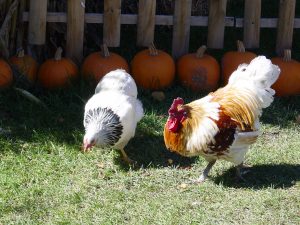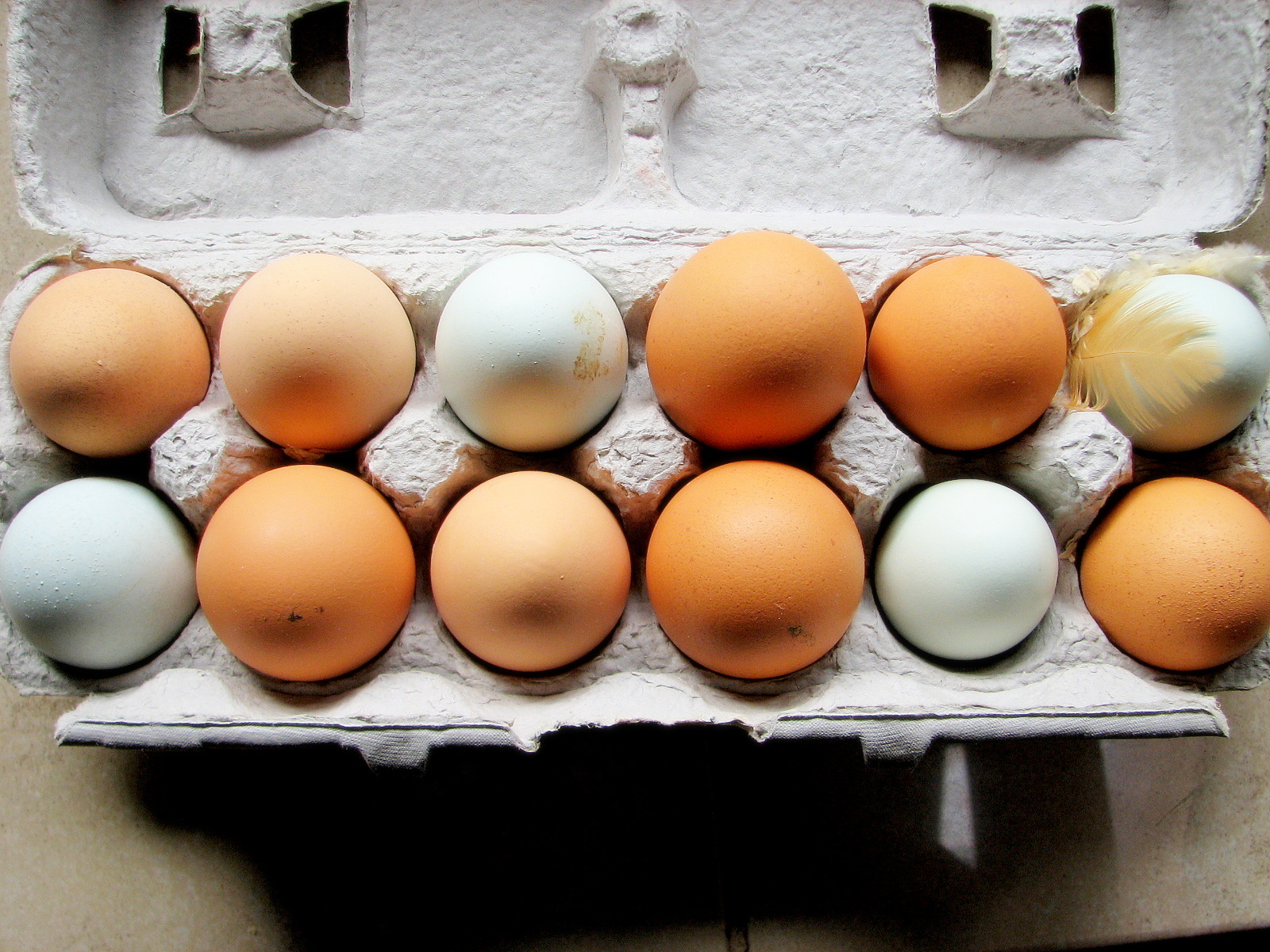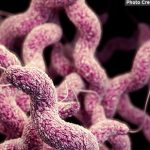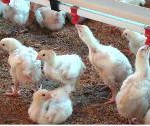Trick, treat or salmonellosis?

A few weeks ago, since the end of October was near, when different festivities were celebrated around the world related to chestnuts, pumpkins, ghosts and others, several American media echoed some strange news: the CDC had warned people against dressing chickens up in Halloween costumes.
This week, however, the American institution pointed out with a press release that the information appeared in the media was erroneous. The CDC just wanted to remind people of the hygiene measures to adopt when having backyard chickens, and especially when these hens are treated as pets (it seems to a trend in the US). The fact is that according to the latest report on zoonoses in the European Union in 2016, almost 100.000 people were affected by salmonellosis, and it is worth remembering what we can do to prevent it.
Salmonella, an old acquaintance.
Salmonellosis is a zoonosis caused by the bacteria Salmonella, which is commonly found in the intestinal tract of healthy mammals and birds. The risk of infection in humans is associated with the consumption of contaminated foods. The most common symptoms of salmonellosis can occur between 6 and 72 hours of the intake and are usually fever, diarrhoea, vomiting, and abdominal cramps. Although healthy adults generally do not require hospitalization and the recovery period is 4-7 days, in children under 5, elderly people and people with weakened immune system, salmonellosis can cause more serious symptoms and it can be even life-threatening. With the name of Salmonella, we include a set of serovars, some of which can cause the disease in humans. The serovars most commonly isolated in the human outbreaks of Salmonella disease during 2016 were (in descending order) Salmonella enterica serovar Enteritidis, Typhimurium, monophasic Typhimurium, Infantis and Derby. The main source of Salmonella in food where eggs and egg products, chicken meat, pork and beef. In addition, not all serotypes are equally present in all foodstuffs, but there is a certain relationship. Salmonella Enteritidis is associated with laying hens and chicken meat; Salmonella Typhimurium is related to pork and beef, and to a lesser extent with chicken meat; and finally, the monophasic Salmonella Typhimurium is strongly related to pork meat and contact with these animals.
How to prevent salmonellosis in our home?
In order to prevent salmonellosis, it is recommended to cook eggs and meat thoroughly before consuming them, not leaving the food prepared with eggs at room temperature for more than two hours, and finally wash properly the hands, surfaces and tools in contact with these foods. On the other hand, referring to the recommendations of the CDC for those who decide to raise their own hens at home, it is recommended to follow specific guidelines to minimize the risk of salmonellosis. Poultry can carry salmonellas in the plumage, in the legs and in the faeces, therefore it is necessary to wash your hands with water and soap whenever the chickens and the utensils are in contact, and use specific shoes and clothes to work where the birds are located. It is recommended that these hens do not have access to the interior of the house (specifically to places where eating or cooking), and to avoid birds from being in contact with mouth or face, which implies not kissing them, and in case of dressing the chickens because some special date is near, then wash the clothes with hot water. However, it is not necessary to be afraid: eggs from these hens can be eaten without problems, as long as the hens are kept clean, eggs are collected frequently, broken eggs are rejected, dirty eggs are wiped with paper or a brush (never washed with water), keep refrigerated, and cook them completely before eating.
What does the industry do?
Now that we have talked about what can be done as consumers, we must know that the European Union has adopted some measures in recent years that have reduced cases of salmonellosis in humans to less than a half. These measures have been included in the so-called National Control Plans, which consist of combining strict biosecurity and hygiene measures in the farm and food industry with additional measures such as vaccinating animals against Salmonella. All of these actions have the objective, amongst others, to reduce the prevalence of Salmonella in the production level in laying hens, breeding birds, pigs or turkeys, in order to reduce the risk of bacteria entering the food chain.Therefore, both the authorities and the industry act to ensure the maximum safety of the products that reach shops, markets, butchers and others, but also those measures can be supplemented with a good hygiene at home (even when having backyard chickens) in order to keep Salmonella far away from our meals.
What is our centre’s relationship with Salmonella?
At CReSA we work on the development of vaccines against Salmonella. Specifically, the objective of my Industrial Doctorate project is to develop a safe and effective vaccine to administer to laying hens and breeders and protect them from the infection with the Salmonella field strains, thus ensuring that products derived from these animals are safe for all consumers.
Cover image: Jerry Smith.














